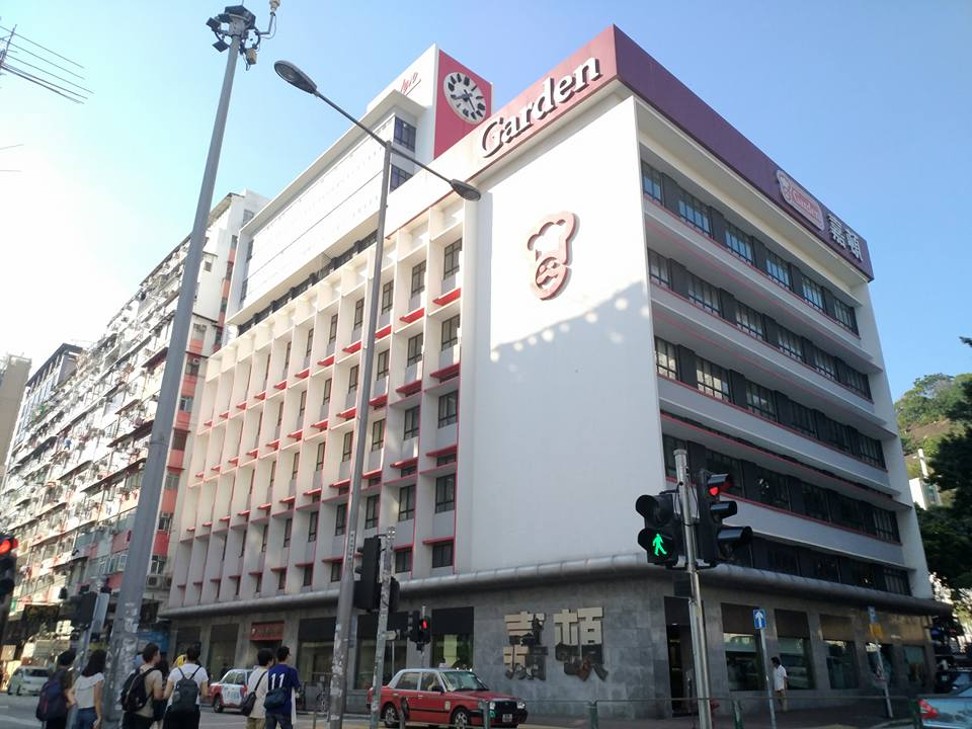
Conservationists up in arms as owner plans to tear down Garden Building to make way for offices
An application by bakery group The Garden Company to redevelop its Sham Shui Po headquarters is drawing fire from heritage conservationists

Hong Kong’s conservationists are speaking out against plans by developers to raze the Sham Shui Po corporate headquarters of The Garden Company, the city’s first bakery and confectionery maker that traces its establishment to 1926.
The owner of the building plans to turn the site at 58 Castle Peak Road into a 25-storey commercial and office building, according to redevelopment applications submitted to Hong Kong’s Town Planning Board.
The structure is the latest to come under the wrecking ball, after a sale in May of the first piece of land in downtown Central in 20 years set a world price record for commercial real estate, spurring many Hong Kong landlords to redevelop their existing property to capitalise on soaring prices.

Many technical and planning issues need to be taken into account in the redevelopment of The Garden Building, said Thomas Lam, head of valuation at Knight Frank.
“The redevelopment project is not 100 per cent for offices. It will include areas for teaching or exhibition,” Lam said, estimating that the commercial portion of the project could be sold for between HK$12,000 to HK$15,000 per square foot, or be rented out for between HK$25 to HK$35 per sq ft every month.
The Town Planning Board has received more than 382 comments on the development application, with more than 90 per cent opposed to the plan. Opponents were dissatisfied that the application failed to make any provision for preservation.
A representative from The Garden Company said the redevelopment plan has not been finalised and is still under discussion.
The company purchased the site on Castle Peak Road in 1935 for HK$10,000 and set about construction of a 1,400 square metre factory facility which began operation in 1938.
In 1958 the factory underwent extensive alterations involving the addition of seven stories which brought its total floor area to 10,000 sq m.
Charles Lai, an architect, said the modernist building reflects the rise of post-war Chinese architects in Hong Kong, who combined Chinese and Western architectural styles.
Thomas Ho, president of the Hong Kong Institute of Surveyors, said he personally thought the Garden headquarters is part of the collective memory of local residents and is worth preserving because of its architectural value.

Ho said society has to strike a balance between conservation value and reconstruction value.
“Some buildings with historical conservation valueshould be renewed and maintained, instead of demolished.”
Ho said he wasn’t against redevelopment of buildings that are of limited conservation value, especially if they are old and dangerous.

Ho said the cost of conservation projects were generally higher than the cost of new building works.
“If the cost of conservation is likely to be unacceptably high, those parts that are seriously damaged and costly to rehabilitate should be considered for dismantling and rebuilding, unless it has been graded as having high preservation value by the Antiquities and Monuments Office,” Ho added.